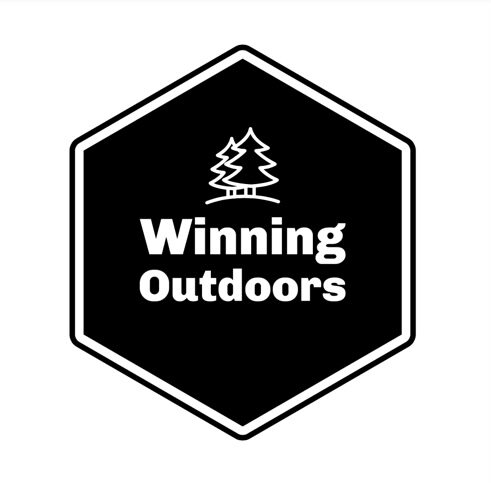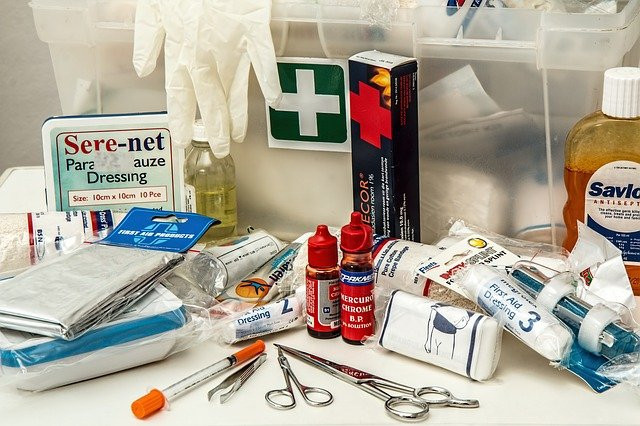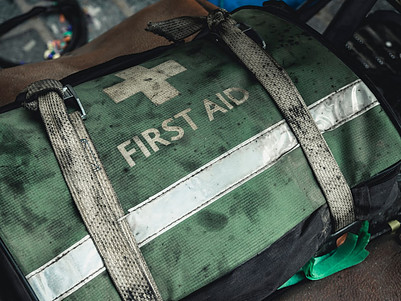We have all been out camping and needed a first aid kit. Hopefully, it hasn’t been for anything serious, but if you spend enough time outdoors, you’ll eventually need something for scratches, cuts, burns, or blisters.
Today, we’ll talk a little about building your own and ensuring your have the right supplies to get you through your trip. Being in the outdoors, you’ll likely be away from medical professionals, but it is important to note that you should never use an item on yourself or anyone else that is beyond your knowledge.
How to Make a First Aid Kit (FAK) for Camping?
While you never know what accidents you may encounter while outdoors, there are some common injuries that you should be prepared for. In preparing your first aid kit, you should consider these items:
- How long will you be away?
- Are there kids and how many people are in your group?
- How far away will you be traveling?
- Prepackaged vs. DIY?
Understanding Your FAK
According to My Open Country, you should buy the best products that your budget allows. Yes, there are a few items where price doesn’t matter, but for the better part of your kit, you should focus on quality not quantity.
You should have a checklist of what items you’ll keep with you and check it before leaving on your next adventure. Be sure that you replenish any used items and replace any expired medications.
Depending on the amount of people traveling in your party, the type or quantity of items may change. It is important to revisit prior to departure.
The distance of travel could play a large part in the amount of items you bring. It is important to have multi use items to cut down on weight. The more weight you’re traveling with, the more likely you are to leave it behind.
The difference between a prepackaged and a DIY kit is all about preference. Yes, there are some reasonable kits available, but you’ll want to see what is in them. A lot of kits advertise 150 or 200 items, but it’s 99% bandages that wouldn’t cover up a fingernail.
Building your own ensures that you have quality items that are geared toward your needs. Either way, check the kit and make sure that your essentials are there. If not, add them!
Expect the Unexpected
According to Trip Savvy, having a stocked FAK is essential. We all know that bumps, bruises, scrapes and sprains will happen when outdoors. Go ahead and plan for it. It is much better to have and not need, than to need and not have.
Here are some basic items to make sure that you have. This list is not all-inclusive, but to make you think.
- Bandages and Gauze- Multiple sizes and Types
- Antiseptic creams and sterile wipes
- Medications – Personal, antihistamine, pain relief, etc.
- Hydrocortizone cream, Triple Antibiotic Ointment
- Tweezers and knife
- Eyedrops
- Moleskin
- Emergency blanket
In addition to the above, I personally keep a CAT-7 tourniquet, Quik clot, and SAM splint in my kits as well. Not that everyone wants or needs these items, depending upon your activities, you may want to consider.
Storing Your Kit
According to Sea to Summit, packaging of your FAK is extremely important. First off, you’ll want to keep your kit easily accessible. We all understand how it can be when packing up and how sometimes there is a tendency to just get it all in there and get going. Don’t do it!
Not only should it be readily available, it should be easily identifiable. There are items available that have the clear markings on them. Most importantly, you OR someone coming to your rescue should be able to find it easily.
Using FA Dry Sacks is one option. This will keep your kit clean and dry for when you need it. Sea to Summit recommends a 1L for day hiking of 1-2 people, 3L for an overnighter, and a 5L for anything more than a couple of days.
Check out more informational posts here.
Conclusion
Having the “perfect” kit is unlikely, but there is a way to prepare yourself for what may come. There is a balance between being unprepared and bringing a full trauma kit. Know your area, your activities, and your group. This is the best way to prepare in advance.
If you found this information helpful or have some items that you feel are needed in a kit, leave us a comment and let us know. You can also subscribe to the newsletter for upcoming posts to keep you in the know.
Keep Winning Outdoors!


